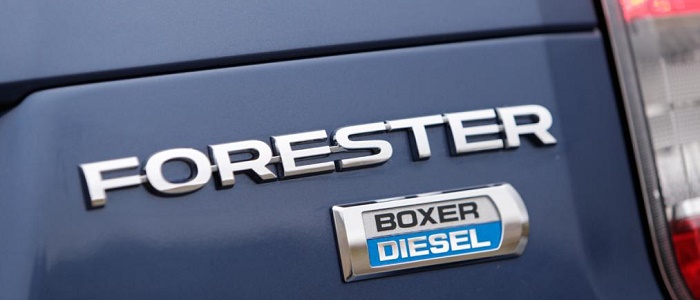


What does actually the Boxer Diesel badge mean on vehicles by Subaru?
This label marks Subaru vehicles utilizing their patented common rail diesel engines with a boxer cylinder configuration (horizontally opposed pistons). Subaru, traditionally offering only boxer arrangement engines, produced only petrol ones up until 2008 when their engineers successfully created a boxer diesel powertrain, the first and the only one in the world. By definition Subaru vehicles powered by these engines have an additional air intake opening on their bonnet due to the top-positioned intake manifold and air filter.
Boxer type engine (then named "Contra Engine") was patented in 1896 by Karl Benz. Advantages of this configuration (flat, horizontally positioned powertrain) is the lower center of gravity, as well as reduced losses due to the fact that pistons are not fighting gravity in any of the cycles. When it comes to disadvantages most notable ones are complicated lubrication and cooling systems, but even so boxer engines are considered highly durable and reliable.
List of cars using this badge




















